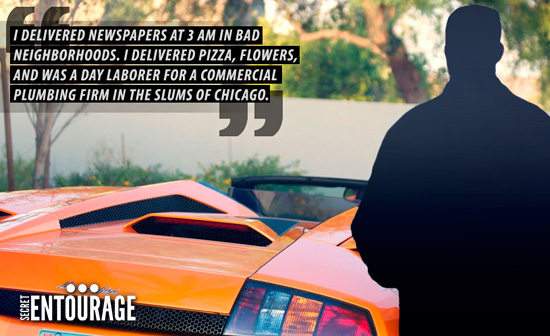
I didn’t have a normal childhood as my parents went through a messy divorce that took years. While by all appearances I lived in a middle-class family, we didn’t have a lot of things that everyone else had. While my friends had all the latest video games, computers, and subscriptions to movie channels, my mom was always had a different concern: Putting food on the table and paying the rent. My childhood set the stage for me to *want* a higher standard free from financial burdens.
Watching my parents go through a dysfunctional divorce and watching my mother struggle to make ends meet as a single mom really laid the groundwork for me to want to control my destiny. While I was young and dumb, I just seemed that all our problems revolved around money, or lack of it. I’d classify myself as a lazy kid back then but pain does a miraculous thing for motivation: It makes you get up and do something to eliminate the pain. The entire story could probably fill another 300 page book but basically, it was the foundation for me wanting something better. We didn’t have all the nice things the neighbors had and early in my life, I realized that feeling out of control is often a root to misery.

Like any teen, I played sports and watched TV. I hung out at the neighbor’s house and played video games on his computer. However, my big turning point came when I saw a Lamborghini Countach at the neighborhood ice cream shop. This was a car I idolized and my familiarity with it was all magazines and posters — but on this day — it was right before me, live, and tangible to the point where I can smell and hear the exhaust. When I noticed the owner was probably 25 years old, the mind-shift came when I made a bold decision to ask the guy what he did for a living. Instead of saying he was an athlete or someone famous, he mentioned that he was an inventor. This threw me onto the path of entrepreneurship as a venue to create wealth, and to create it young. It was then I realized that I could experience wealth young without having to be an athlete or someone famous.
I attended Northern Illinois University. Unlike a lot of kids these days, I paid for it myself through loans, grants, and mind-racking jobs, often on the graveyard shift. (I had a security job that started at 3am – not fun!). The benefit of paying for college yourself is you place a higher value on it. While I was a C student in high school, in college I didn’t squander the education — I ended up graduating in the top 10% of my class and even managed to pull a 4.0 a few semesters. I think it was then I learned that I could accomplish anything with enough dedication and discipline. As for the experience, the degrees I earned (finance and marketing) had little value – the experience and growth that happened during college is where the real value was. College nowadays is much maligned and for good reason, but the big question of its value to each individual is a highly personal question requiring much introspection for the person making the decision. Some need college to mature; others don’t.

Geez, where do I start? I delivered newspapers at 3 am in bad neighborhoods. I delivered pizza. Flowers. Stock clerk in the drapery department at Sears. Oh, and how about the day laborer job for a commercial plumbing firm in the slums of Chicago. Now that was fun! I hated these jobs because I knew what they were: A trade of my time to pay the bills. Unfortunately, most of society does this and in effect, is a dream-killer and illustrates why most people are miserable. If you have a job and its only purpose is to pay the bills, you’re gonna be miserable. To live a dream, your dream must be alive. While I hated these jobs, they had their purpose and that purpose was to keep the bills paid while I pursued the dream.
Of course, I think we all fall for get rich quick schemes. One tiny classified ad, no-money down real estate, tax-lein certificates, you name it. Ultimately, I wised up and realized that the only people getting rich on the “get rich program” was the program creator themselves, not the plan being sold. A lot of savvy Fastlaners recognize that there is more money in selling information on making money than the actual “making money” plan itself. Once you have, what I call, “Fastlane goggles”, spotting these contradictions becomes easy. And yes, while I’ve made millions in my own business, selling the wisdom and experience that I’ve learned along the way has the potential to make me more millions by virtue of Fastlane mathematics.

Countless failures. I lost count. However, in these failures I started to notice patterns. I was always buying into someone else’s dream, or Fastlane plan. I had to learn HOW to STOP being a swab of paint in someone else’s big picture. When you join an MLM company, you’re electing to be a swab of paint in a Fastlaners’ grand plan. When you join an affiliate program, you’re electing to be a cog in the wheel of a Fastlaner’s marketing plan. My failures always stemmed from being a guppy in a shark tank. Fastlane success comes from being the shark in the aquarium whereas everyone else takes the easy road and signs-on to be the guppy. I’d give up on ideas when the market clearly indicated that what I had to offer wasn’t needed, or wanted. I learned that the marketplace was the ultimate judge-n-jury — not my personal convictions, needs, wants, or desires. Frankly put, the market doesn’t give a crap about what you or I want. If you have something the market wants, the market gives you money.
All my business failures were the result of trying to start businesses that the market didn’t need. I was simply following the advice of gurus who said I should do what I love, or do what I know. I started a vitamin business. A car audio business. The list is pretty long. Unfortunately, what I loved, and what I knew — the market didn’t need. And if the market doesn’t need what you offer? You have to sell your soul for the cheapest price and/or spend a fortune on marketing. I soon realized that if you give the market something it needs in terms of value, money follows. In my first days of entrepreneurship, I was chasing money instead of chasing needs and utilizing a cracked foundation.
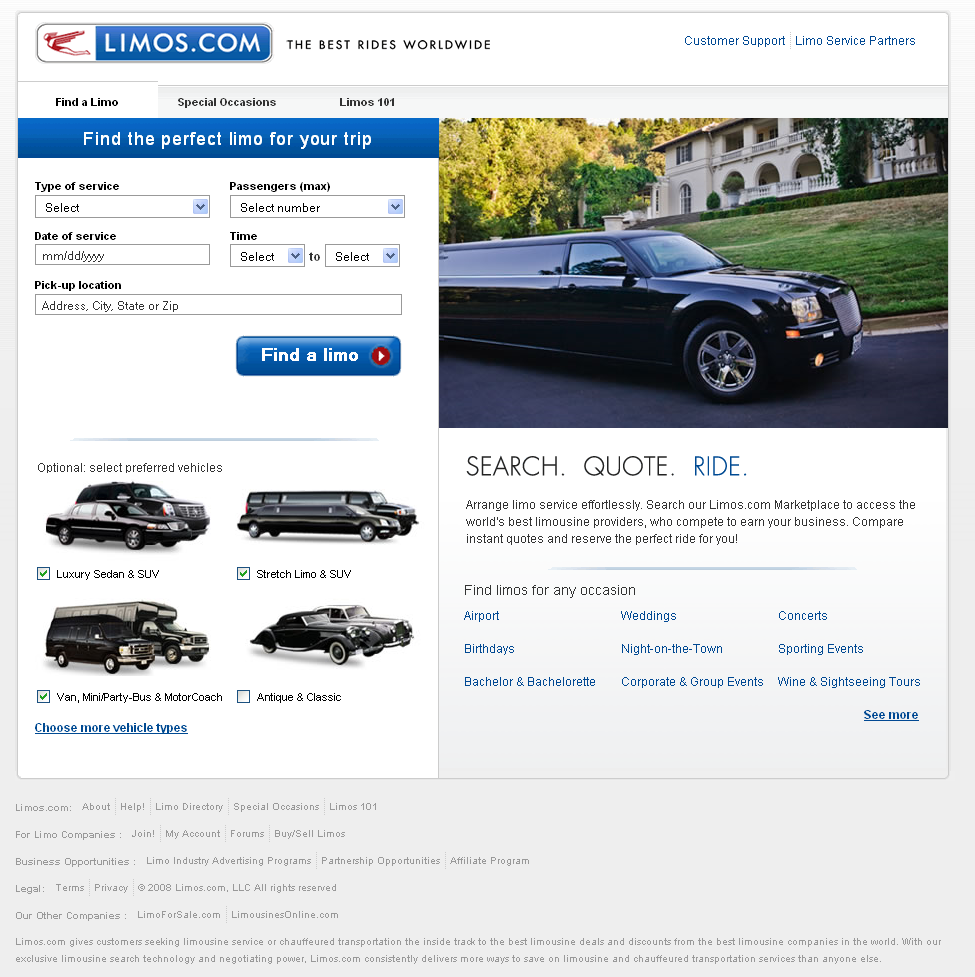
Well I hate to shatter the misconception of my haters, but I didn’t buy it at a domain registrar for 15 bucks. I bought it in the “aftermarket” — after I noticed the website for sale on a “domains for sale” website, I contacted the gentleman who owned it and made an offer. Needless to say, the 5-figure price tag at that time of my life, was the biggest purchase of my life — I financed most of it on my credit cards.
My initial vision was just to be a better, interactive alternative to the Yellow Pages (a flat-fee directory service) but by listening to customer feedback, I was able to morph it into so much more. We started as a directory service but soon learned that there was a better value proposition by offering a “pay-for-performance” model to advertisers where you only paid for the lead opportunities you received. Then we allowed advertisers to join for FREE to eliminate the risk proposition. To put it frankly, many businesses were tired of gambling on “upfront” advertising fees and then later learning that they paid $1000s for nothing in return. We put that risk to bed.

While driving a client to the airport, he asked me if I could recommend any limo companies in New York. I couldn’t. But I realized at that moment that if this gentleman had this issue, thousands of other people would too. Of course this was just the birth of the idea that led to many other problem-solving, value-adding ideas. For example, I also structured my business to be a risk-free advertising proposition for people and allowed services to join for free and only pay for the leads they received. If they received nothing, they paid nothing. At the time, nothing like this existed. If you paid to advertise thousands in any venue and received no business in return, you just lost a lot of money. This risk was troublesome to many businesses and I sought to solve it.

I did most of it. I knew every line of code and every nuance. On occasion I would subcontract local help for specific programming needs that I couldn’t do, or figure out. For example, we had a very expensive IVR (Interactive Voice Response) system that was done in Phoenix by a local company. I remember some of my billing software was programmed by a local DB administrator. But for the most part, I did all of it, and learned the entire length of the way.
It was a mix of pay per click, affiliate partnerships, and good old fashioned search engine optimization. I made a point of being FOUND where the end users where found. If my site was found, the advertisers would follow. To start, I would visit the library weekly and troll through other cities’ Yellow Page books and use that public information to fill-out my database.
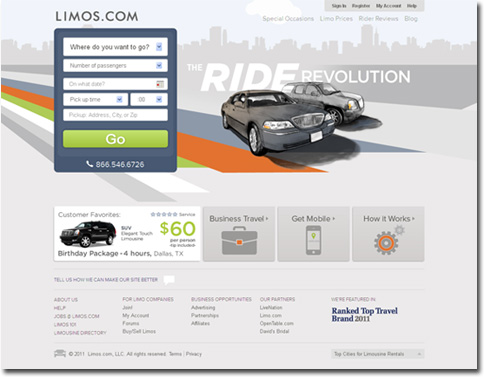
I switched to the lead structure when I realized it could be scaled far more effectively than a directory service AND it was a better value proposition for advertisers, and for ourselves in terms of performance. We received 100’s of leads per hour and I knew that they had value if they could be properly distributed and followed. Since there was no fee to join our service, attracting advertisers wasn’t too difficult. Then, any fees incurred by advertisers would be directly attributable to the website. Additionally, many of our advertisers experienced other benefits such increased web traffic and call volume, of which, we did not charge for.
As a directory, we operated under an entirely different equation for revenue and profitability. Conversely, a “pay for performance” lead model FORCED us to be active in attracting traffic; if we didn’t, we’d go broke. As traffic increased, so did our profits as a direct correlation. On the other side, as a directory service, the advertisers paid a flat fee regardless of the site’s effectiveness so therefore, our profit was NOT directly correlated to traffic, but correlated to advertiser closings. Therefore, what incentive would that company have for advertising aggressively? If JOE SHMO COMPANY paid $200 to advertise, that cost is SUNK regardless is JOE SHMO gets 1 booking or 100.
Sadly, our competitors who operated a directory format couldn’t keep up because their motives weren’t pegged to improving traffic levels but to the # of advertisers closed, not end user utilization. I thought it was extremely important to have profitability pegged to traffic/end users (and hence leads generated) and not pegged to “how many advertisers can we close.” Let the market dictate your path. The market will always tell you the best direction to go. When a pattern emerges in the market feedback, you have an opportunity to steer in that direction.
Our revenue was around $3M. When I sold it, it was on pace for $2.5M for the year. While this isn’t a lot, our product price point was 99 cents and I was operating at approximately 45-55% margins. It was a crazy time. We didn’t even have a lot of revenue but money was loose back then. Because I came from a relatively poor background, the thought of a 6 or 7 figure payday was unimaginary for me. Naturally, when the offers came, I knew I wanted to take one and become a part of the dot-com craziness that was going on at the time. I saw it as a stepping stone and it was. At the moment, no one had any idea what was around the corner (the dot com implosion).

It didn’t really need turning around. The company that owned it was going bankrupt, the unit (website) itself was always profitable. However, with all the dot-com failings going on around me, it was a fun challenge for me to not only survive, but thrive. During those early years I didn’t have to worry about a lot of competition because funding had dried up and VC’s were running scared. After 6 years of consecutive profitability, I ended up selling again in 2007.
I still own very little shares but have no involvement whatsoever with the current management team. The reason I sold was because I knew the “lead generation” space had a limited life; the next step was to move to real time reservations and co-branded partnerships with larger brands, the manpower (and money) required for this was beyond something I wanted to do. The new management is doing a great job in taking the business where it really needed to go. I even saw the company on the Forbes “Most Promising Companies” list a few months ago; quite an accomplishment for the guys in charge.
The Fastlane is a complete business, mathematical and psychological framework for creating wealth quickly and responsibly by adding value to markets where none exists. By strategically swapping HOPE for CONTROL, the Fastlane strategy can give you the unprecedented power to create extraordinary, life-changing, millionaire-making wealth. Instead of waiting 50 years to accumulate millions, it can be accomplished in just a few short years. Unfortunately, we are being brainwashed into a lifetime “mediocracy” — go to school, get a job, save 10% of your paycheck, trust your life savings to the stock market, live frugal, and voila, in 50 years you will be rich. Frankly, that prescription for wealth is nothing but a bunch of BS.
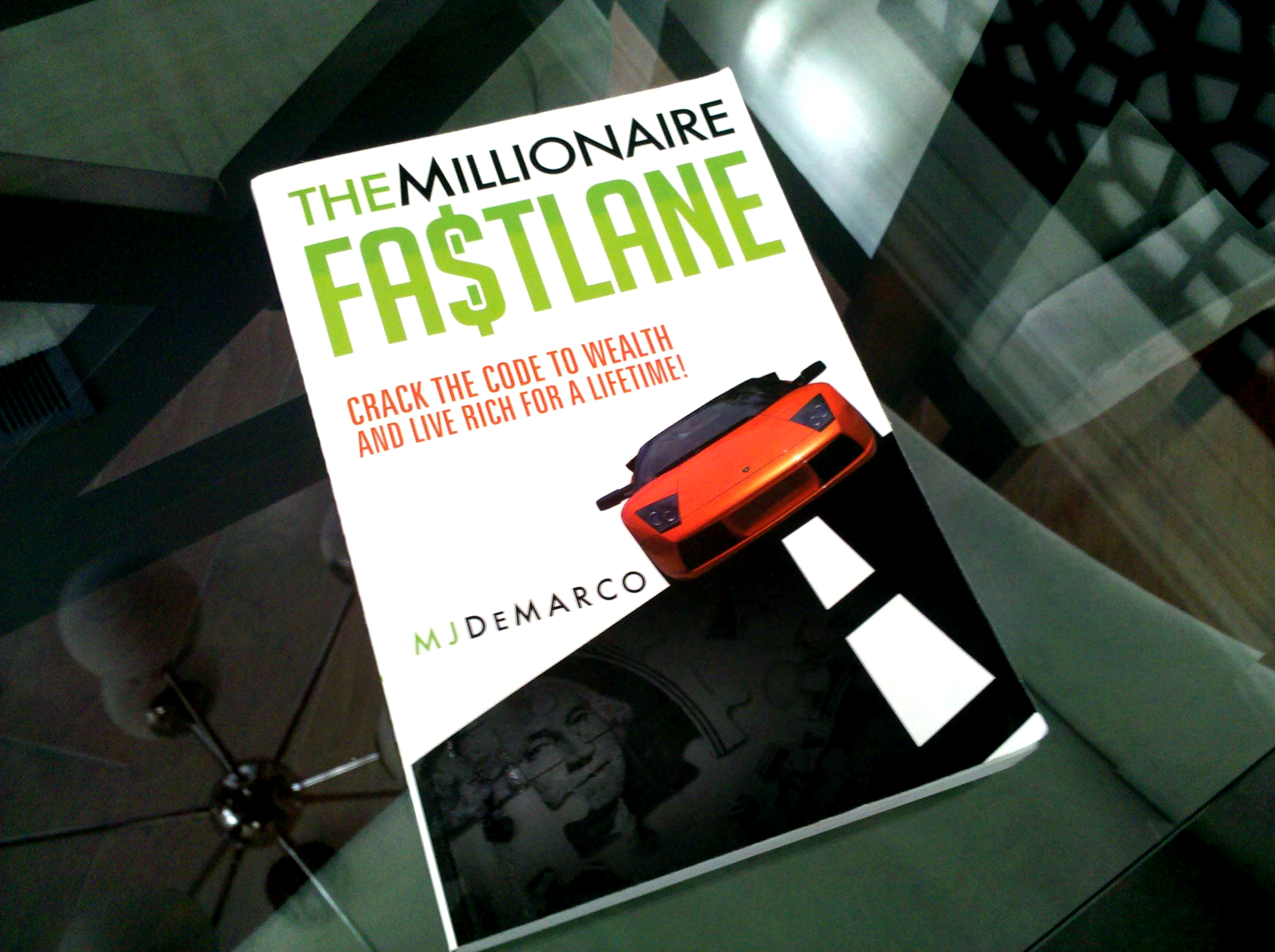
My current business which is a publishing company that controls the rights to my book, The Millionaire Fastlane as well as any other book projects I might oversee. Examined within the NECST commandments , it is a strong Fastlane candidate.
NEED: I thought that the market NEEDED to hear what I wrote in The Millionaire Fastlane. It is the book I wish I had when I was 20.
ENTRY: Not everyone can both write and publish a book.(Not print-on-demand, but actually own the company and all rights.)
CONTROL: I own the full rights to the book and currently, I am selling translation licenses to other publishing companies in other countries. (Another principle of Fastlaners; we should be net sellers/producers, not buyers/consumers.) After I sell rights, I earn royalties on sales in other countries.
SCALE: A book that has value and an audience can scale to tens of thousands of readers, if not millions.
TIME: The income producing asset is the book and it is on sale 24 hours a day, 7 days a week. I make money while I sleep, just like I did with my internet company.
The essence of the Fastlane is a business that meets all 5 NECST commandments, or most of them.
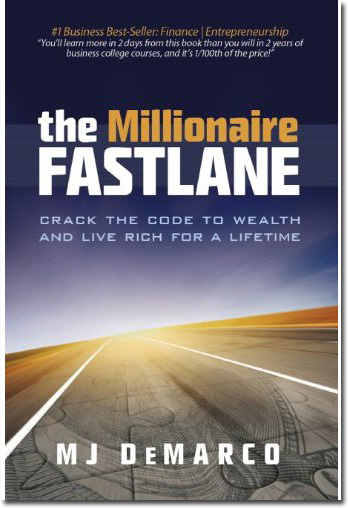
That’s a difficult question to answer. I was lead to entrepreneurship by my childhood experiences. However, I believe entrepreneurship to be the best career choice because it carries with it an internal locus-of-control. Locus-of-control is the perception that you are in control over your life and entrepreneurs, whether they are successful or not, will tell you that they are happier. When you feel in control (whether that control is a mirage or not) you are likely to be more happy. This is why a lot of job holders and life long employees are miserable — they never know when that pink slip is coming. This is why people who rely on the stock market for wealth are miserable — they never know when that next market crash is coming and 20% of their savings is wiped out in hours. The happiest turning point of my life was when I was 27 years old and it has remained constant ever since — 27 was the age when I was fully self-supporting myself through entrepreneurship. While I wasn’t rich, I felt rich and that feeling has never disappeared simply because I feel I am in control over my destiny and my financial future.
I sacrificed plenty and it is in the sacrifice where the Fastlane winners and losers are found. Nowadays, there are so many distractions. Facebook, your iPad, the internet, that saved DVR episode of Family Guy — all these choices serve as roadblocks to any kind of success. For me, I remember giving up weekends and evenings to work my plan. My studio apartment bordered a lively bar — I remember being tempted to go out and run across the street and party but instead I chose to work my plan, and only reward myself with partying when I accomplished something. Even today while I have more options available at my disposal, I take gratification as a reward for accomplishment. When people gratify themselves without regard to accomplishment or consequence, the result is long-term pain. This is why we have people enslaved to jobs – they have debts to pay and debt is a consequence of gratification.
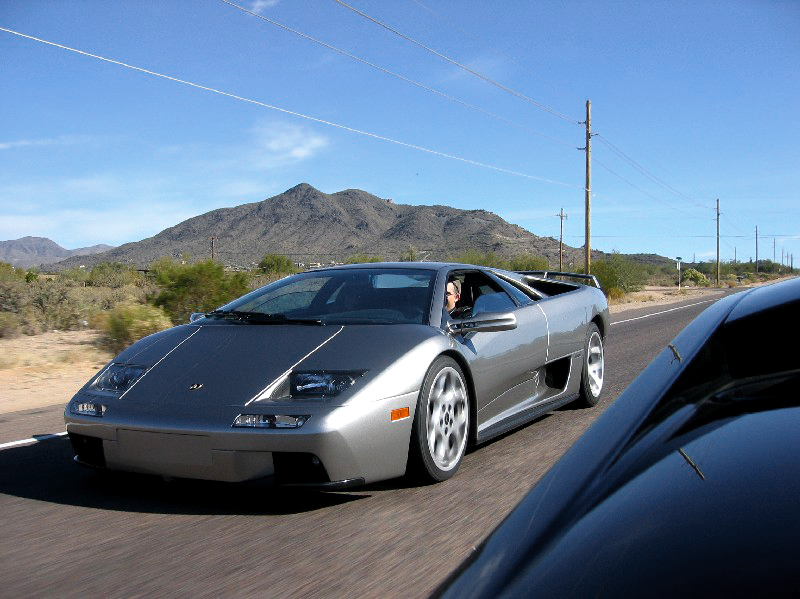
The spaceship doors that open skyward as opposed to outward. When you’re 13 years old and you see that in person, your jaw just hits the ground. I never was into Ferrari’s although I think they too are visually stunning. To me, if Ferrari was a color it’d be white while Lamborghini would be black. My favorite color is black. When a Ferrari owner moves to the Lambo brand, many of us in the Lamborghini community often express the phrase “welcome to the Darkside” — an implication that Lambo guys hang with the likes of Darth Vadar. =)
I think I was 36. The Diablo was 34. The feeling is awesome, but fleeting — it’s great to accomplish your dreams but people don’t realize the hard work and effort required to get there. The person who you have to become to reach your dreams is more important that the rush of buying something tangible. I live in Arizona – one of the few places in America where a top is not necessary. Anyone that knows cars, knows the M-Roadsters have that goofy toupee top. I can proudly admit that my Murcielago Roadster top has NEVER been on the car and has been stashed away in a closet for years. I stepped up to an Murcielago over a Diablo because my Diablo was always needing some type of service. My Murci, on the other hand, has been as reliable as my Toyota which is why I’ve owned it for a few years. I never was moved by the G.

Probably nothing in the near future. Nothing out there is very exciting to me, at least until I see an Aventador Roadster. I’m kind of getting too old for the speed demon thing. I’m actually thinking about a nice laid-back Mercedes convertible.
By all means follow your passion, but make sure you put that passion into something that the marketplace NEEDS or DEMANDS. Many passionate people are broke and can’t pay their bills because their passion is misdirected into shit that the market doesn’t want, or need. All entrepreneur success stories start and end with a product/service that has a demand. Quit chasing money — chase solutions and provide value — the money then follows.
The Millionaire Fastlane
Fastlane Entrepreneurs
